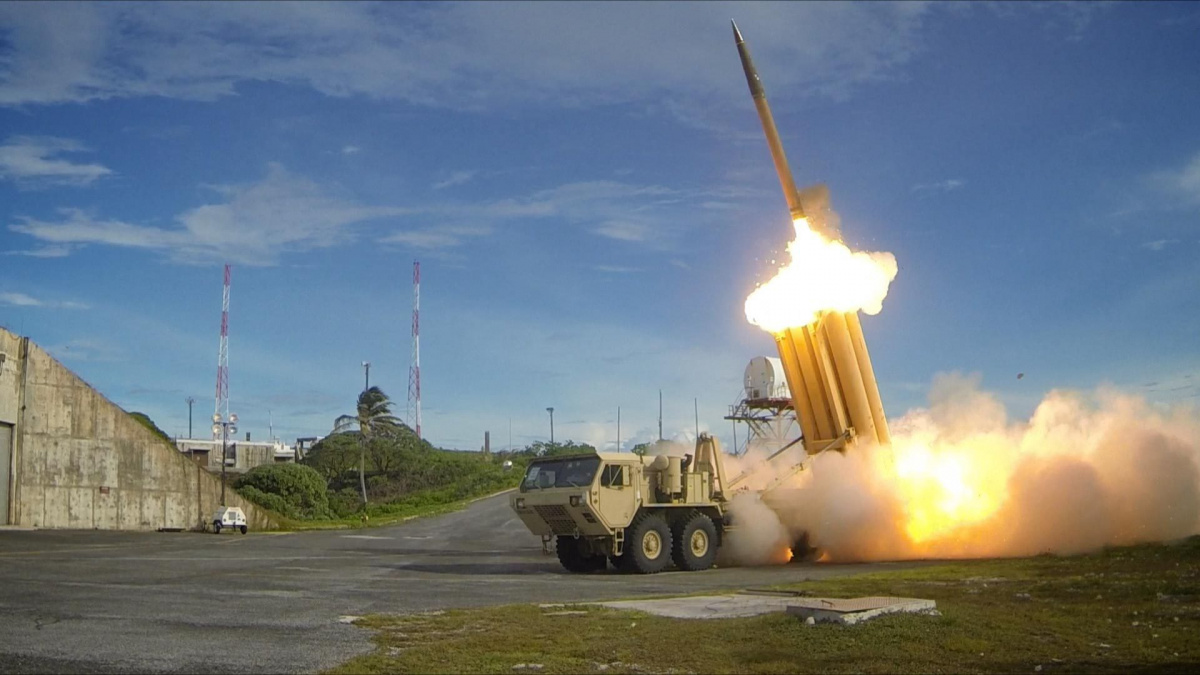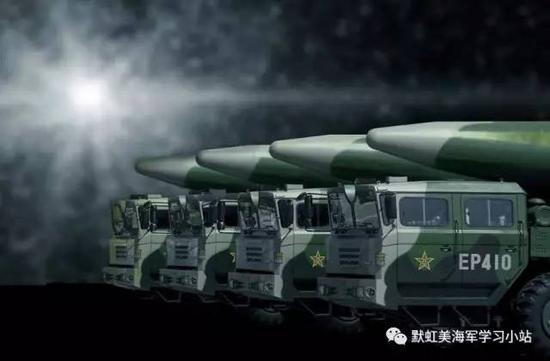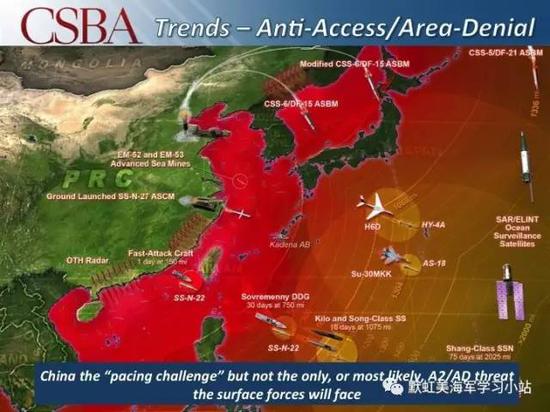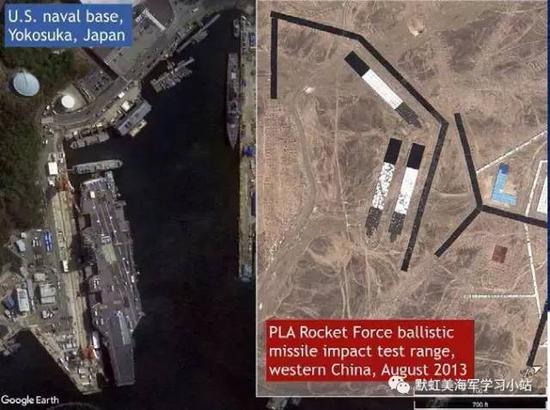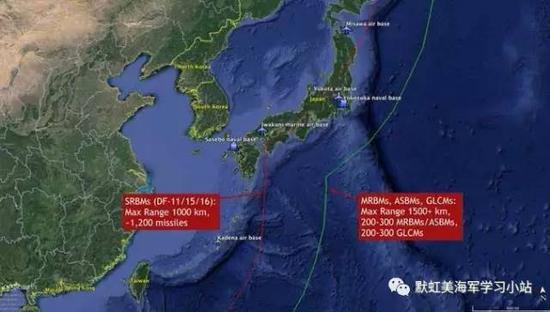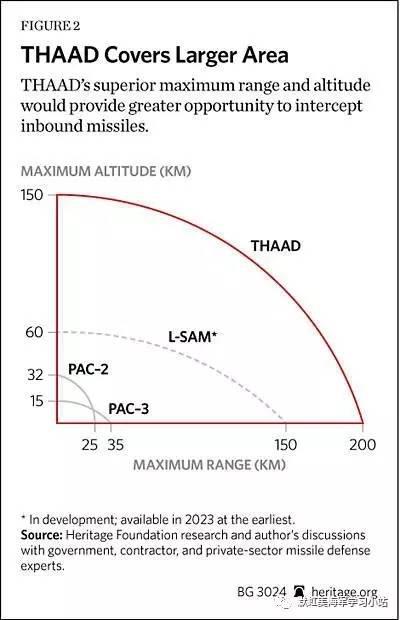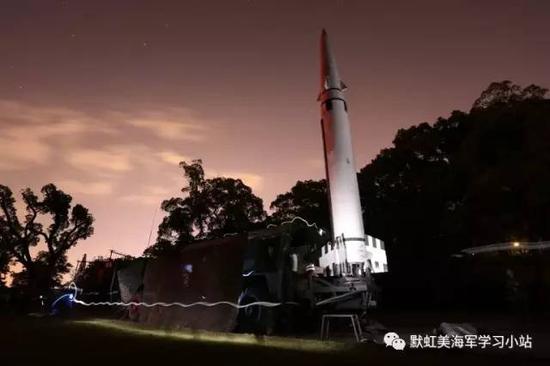Ang Moh felt the chill down their spins when THAAD can do nothing about Kim Jong Nuke missiles!
http://www.news.com.au/technology/i...d/news-story/fc35f24ecda160c465a60014393b1436
North Korea nuclear weapons: Is THAAD enough to protect the world?
AMERICA’S missile system is designed to protect the world from North Korea. But will it be enough to stop all that firepower?
Debra Killalea@DebKillalea
news.com.au
April 28, 20175:53am
IT’S the controversial missile defence system designed to help South Korea and US military forces stationed on the Korean peninsula.
But while the Terminal High-Altitude Area Defence system (THAAD) can potentially shoot down a North Korean ballistic missile, it may not be enough protection against the military might North Korea showed off this week.
According to Brendan Thomas-Noone, a research fellow at the United States Studies Centre at the University of Sydney, the THAAD is unlikely to defend Seoul against dozens of missiles fired from the sea which Pyongyang has been working on.
Mr Noone, an expert in nuclear deterrence in the Indo-Pacific, told news.com.au the THAAD adds a level of uncertainty for the North Korean regime.
It also deters North Korea from firing one or two missiles from a certain direction towards South Korea.
This image shows what was said to be a Combined Fire Demonstration held to celebrate the 85th anniversary of the North Korean army, in Wonsan. Picture: KRT/AP
This image shows what was said to be a Combined Fire Demonstration held to celebrate the 85th anniversary of the North Korean army, in Wonsan. Picture: KRT/APSource:AP
“North Korea will see its deployment as troubling for its missile program — that’s why it has taken the time and resources to invest in sea-launched missiles that can get around THAAD,” he said.
“But it’s unlikely to change much of the equation for them.”
His comments come after North Korea released alarming photos revealing its firepower in its “largest ever” military demonstration near the eastern coastal town of Wonsan.
The drill conducted earlier this week was intended to mark the 85th anniversary of the founding of the Korean People’s Army.
The display, supervised by leader Kim Jong-un, included 300 “large-calibre” self-propelled guns lining up along a beach firing all at once. It also involved submarines firing torpedoes and low-flying jets dropping bombs.
Independent journalists were not given access to cover the event depicted in the demonstration held to celebrate the 85th anniversary of the North Korean army, in Wonsan. Picture: KRT/AP
Independent journalists were not given access to cover the event depicted in the demonstration held to celebrate the 85th anniversary of the North Korean army, in Wonsan. Picture: KRT/APSource:AP
The display was designed to simulate an attack on enemy warships and resulted in a defiant South Korea announcing that key parts of a US missile defence system have been installed to defend itself from any further provocation.
This included two or three launchers, interceptor missiles and an X-band radar.
WHAT IS THAAD?
The system, which has been set up with assistance from the US, is expected to be tested for the first time next month with expectations it will be fully operational by the end of the year.
The full THAAD includes three to six truck-mounted launchers which can carry about 50 interceptor missiles. This is backed up by a long-range radar, hailed as the world’s most advanced mobile radar.
But Mr Noone said it was more than that.
He said THAAD is designed to intercept a missile in its ‘terminal’ phase or the final stage as a missile is coming down to hit its target.
Kim Jong-un pictured at combined fire demonstration of the services of the Korean People’s Army. Picture: AFP
Kim Jong-un pictured at combined fire demonstration of the services of the Korean People’s Army. Picture: AFPSource:AFP
It’s also a huge deterrent and largely seen as an asset by nervous South Koreans.
“The THAAD being placed in South Korea will help protect military installations and population centres from medium and short-range ballistic missiles that are fired directly towards South Korea,” he said.
“But there are tactics that North Korea can use that will help circumvent the protection that THAAD will provide.”
NOT HAPPY CHINA
But not every nation is thrilled at having the system around and not all South Koreans are enthused about it either.
China has made it clear it’s far from happy at having the “weapon” so close to its borders.
Beijing’s foreign ministry spokesman Geng Shuang threatened to retaliate if the US does not remove it. He accused South Korean and US governments of inflaming regional tensions.
A man holds a candle shaped banner during a rally to oppose a plan to deploy an advanced US missile defence system THAAD in South Korea. Picture Lee Jin-man/AP
A man holds a candle shaped banner during a rally to oppose a plan to deploy an advanced US missile defence system THAAD in South Korea. Picture Lee Jin-man/APSource:AP
Mr Noone said the radar on THAAD is very powerful and has the range to be able to see deep into Chinese territory.
“The United States and its partners already have similar radars in Japan and Taiwan,” he said.
“When the information from these radars are combined together, they will likely provide intelligence on Chinese missiles. This makes Beijing uneasy in terms of its own nuclear posture with the United States.”
This US Department of Defense handout photo shows US Forces continue progress in fulfilling the South Korea-US alliance decision to install a Terminal High Altitude Area Defense, or THAAD, on the Korean Peninsula Picture: DOD/AFP
This US Department of Defense handout photo shows US Forces continue progress in fulfilling the South Korea-US alliance decision to install a Terminal High Altitude Area Defense, or THAAD, on the Korean Peninsula Picture: DOD/AFPSource:AFP
CAN IT STOP KIM?
Mr Noone stressed the THAAD wouldn’t be enough to stop the displays and posturing coming out of North Korea and warned we would see more of this until North Korea was willing to come to the negotiating table.
He said North Korea is a fairly militarised society and the regime sustains itself through displays like this week’s, which show it’s able to defend itself against the West.
A Terminal High Altitude Area Defense (THAAD) launcher is installed at a golf course in Seongju, about 300 kilometres southeast of Seoul. Picture: AAP/Yonhap News Agency
A Terminal High Altitude Area Defense (THAAD) launcher is installed at a golf course in Seongju, about 300 kilometres southeast of Seoul. Picture: AAP/Yonhap News AgencySource:AAP
“We’ve known about their long-range artillery capabilities for a long time, and before their nuclear and missile program these artillery pieces were one of the main reasons why the West has not been able to contemplate a military attack on North Korea,” he said.
“South Korea’s capital, Seoul, is within range of North Korea’s artillery, but the display didn’t show anything new.”
REAL OR FAKE?
While a military expert today said that some of North Korea’s military weapons it put on show two weeks ago are fake, Mr Noone said the most recent display didn’t fit that description.
Michael Pregent, a former US Army Intelligence Officer, told Fox News that some of the weapons held by soldiers during Pyongyang’s April 15 military parade are not real, including certain artillery.
This 2015 photo shows a terminal High Altitude Area Defense (THAAD) interceptor being launched from a THAAD battery located on Wake Island in the Pacific Ocean. Picture: AFP/DOD
This 2015 photo shows a terminal High Altitude Area Defense (THAAD) interceptor being launched from a THAAD battery located on Wake Island in the Pacific Ocean. Picture: AFP/DODSource:AFP
“Some of the (Intercontinental ballistic missiles) on display may well be fake,” Mr Noone said.
“But that doesn’t mean North Korea hasn’t or won’t build them.
“We already know some of the missiles that were on display are real because they’ve been used and tested.
“The display we saw this week was very real.”
[email protected]
North Korea's Missile Advancements



